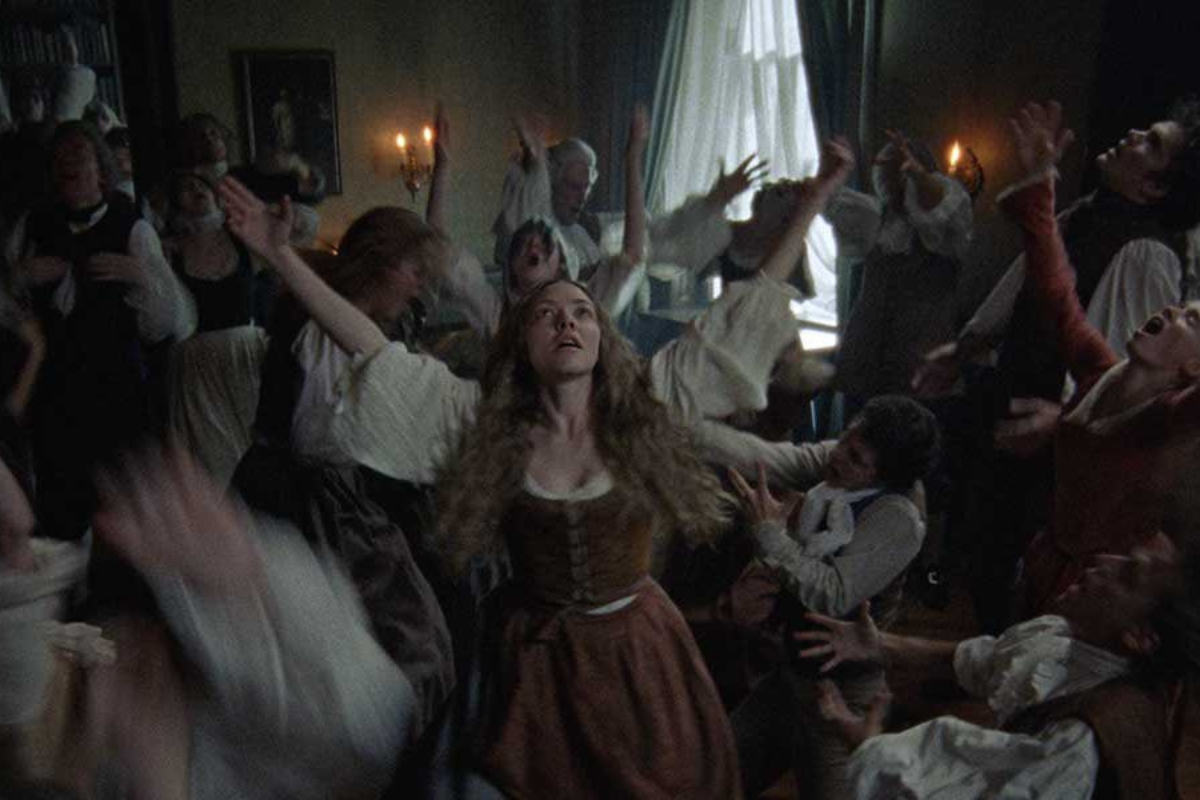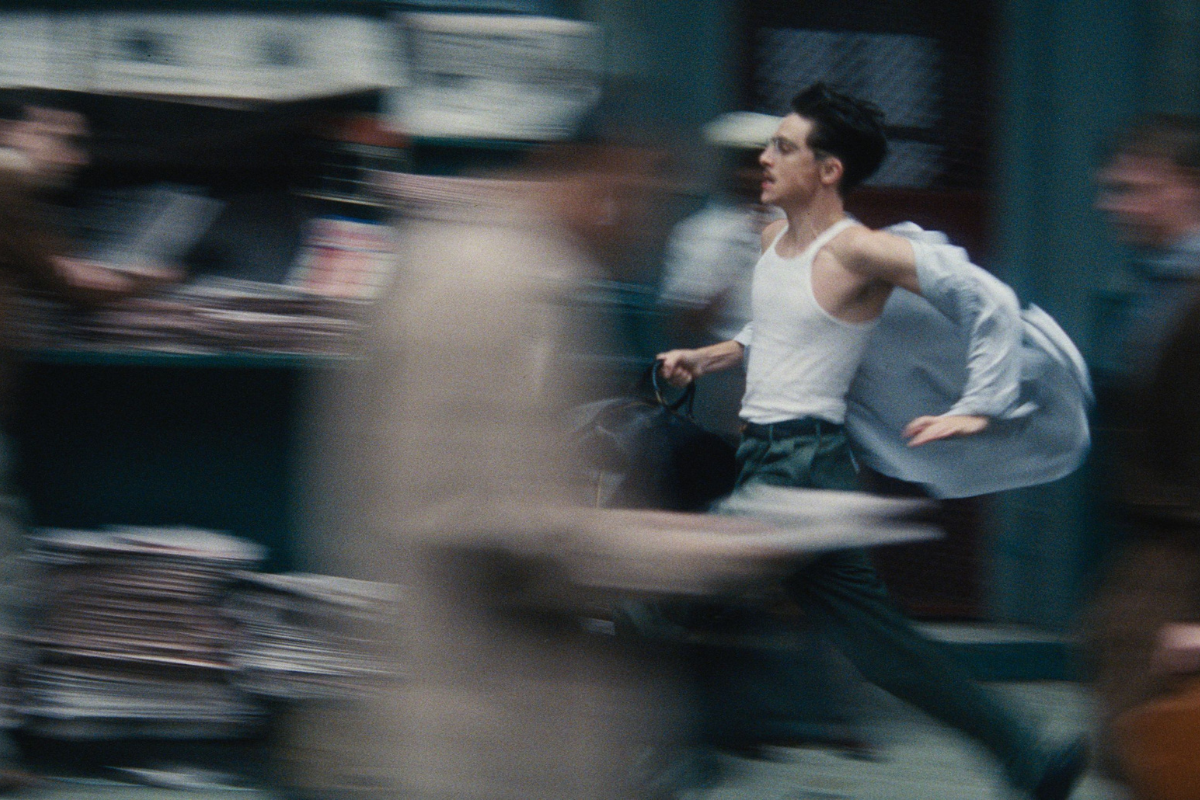UNDERSTANDING SCREENWRITING: Screenwriting for Ulysses S. Grant and Jane Russell
Who else but Tom Stempel would connect Ulysses S. Grant and Jane Russell in a column about screenwriting? Dive into his thoughts on creating interesting characters for actors to play.
Television, New and Recycled.
A few new things popped up on network television this spring. On CBS there was Broke, a new sitcom about a rich married couple who have their money taken away by the husband’s father. They move into the wife’s sister’s house. The house and the lifestyle are much less flashy than they are used to. Conflicts abound.
If you saw the ads for the show, you would have assumed the star was Pauley Perrette. This is her first series after playing the oddball forensic scientist for the last 250 years on NCIS. It was Perrette who appeared on the cover of TV Guide when the show debuted.
But in the credits for the show, the top billing goes to Jaime Cavil, who played Jane’s soap opera actor father in Jane the Virgin. He rightly deserves top billing because he brings his marvelous comedy chops to the role of the husband. Perrette has not done sitcoms before and it shows. She does not understand how to read comic lines, and she kills the comic effect by wearing bangs that come down to her eyes. This distracts the viewer because we need to see her eyes as well as hear her to get the full impact of the jokes. The show was cancelled at the end of the season.
The History Channel, for its spring special, gives us a six-hour miniseries on Ulysses S. Grant, the great Civil War general and later President of the United States. (I say six hours, but if you DVR it and fast forward through the commercials, you can finish it up in 4 ½ hours.) Like a lot of History Channel projects, it depends a lot on recreations of events. In the case of Grant, the more impressive of those are the battle sequences, using what I take to be Civil War re-enactors. A lot of shots are repeated from battle to battle, but the maps make clear where we are. There are a few interesting special effects shots, especially during the siege of Vicksburg.
I have never been impressed with recreations in historical documentaries, since they never seem convincing. That is really true here. The two credited writers, Nicholas Greene and Frederick Rendina, very seldom give us scenes. Their idea of a scene is two historical figures in a room or on a battlefield, each saying two or three lines. That gives both the writers and the poor actors nothing to do. They cannot build up the drama inherent in the story. I am not mentioning the actors by name, since many of them have done better work and will do so again, but none of them come across well in this film.
The actor playing Grant, who has a long resume, looks sort of like Grant, but the script does not give him any moments that can make him a convincing general. If the writers do not give you good material, there is not a lot you can do. The actor cast as William Tecumseh Sherman does not look the slightest like the photographs of General Sherman, in which Sherman looks like he has been living in the woods for twenty years. And the writers do not give Sherman any Shermanesque lines.
Worst of all is the actor cast as Abraham Lincoln. The actor looks like he is still in high school and is wearing a hook-on beard and has watched Daniel Day Lewis in Lincoln too many times. Grant and Lincoln did not meet in person until well into the war, so we are waiting for that scene. Again, few lines, but no scene.
There are a lot of photographs of the real people used in the film, and the photos of Grant bring him to life a lot more than the script or the actor do. As Ken Burns, the master of historical documentaries, does, the film includes a variety of experts talking about Grant. Ron Chernow, a Pulitzer Prize-winning historian, who wrote a book on Grant, sounds exactly like what you would expect a Pulitizer Prize-winning historian to sound like. Unfortunately, the filmmakers here do not have the equivalent of Shelby Foote, who stole Burns’s The Civil War with his folksy wit and charm.
Brockmire came back for a fourth and last season, and the show may have gone a bridge too far. This last season jumps ahead to 2030, and Brockmire is called in to become the Commissioner of Baseball. Huh? Well, it appears that nobody else wants the job. But given his background, how desperate would baseball need to be? Plenty, sure, but really? The whole point of the character is that he is a mess. He may straighten up a little bit, but if he straightens up too much, he’s not Brockmire. That’s often a problem with some shows: they go on so long they become repetitive. I suspect the makers of Brockmire were trying to avoid that, but there is only so much you can do with a character like Brockmire.
Killing Eve is back for a third season. The best episode of the season is episode 5, “Are you from Pinner?,” written by Suzanne Heathcote, one of the executive producers of show. The episode is what is called in the trade “a stand-alone episode,” which means you do not need a lot of backstory from the rest of the series. In fact, Eve never even shows up.
Villanelle gets information that her family is still alive in the small town in Russia where she grew up. So she goes home to visit. Well, if Villanelle was somebody other than a professional killer, it might be a nice, sentimental reunion. With Villanelle, we can be pretty sure she is going to kill somebody. So we watch her react to her family, and we watch her react to the village, to the festival, to everything. Jodi Comer, who is great in all the other episodes as Villanelle, is spectacular here. I don’t know how many of Villanelle’s reactions were written by Heathcote, but Comer gets them all. Yes, somebody or other dies, but we don’t know until Villanelle gets into action who. Heathcote and Comer keep the suspense as tight as they can.
The first Penny Dreadful series ran from 2014 to 2016. It was set in Victorian England as a group of four try to deal with supernatural threats. I am not into Victorian gothic, but there were those loved it. John Logan, the creator of that series, is back with a new variation Penny Dreadful: City of Angels, set in Los Angeles in the 1930s.
Two cops, the veteran Lewis Michener and his new partner Tiago Vega are assigned to a murder case. Vega is the first Mexican-American on the LAPD detective squad. Boy, is there a lot that could be done with that character, but not much is. John Logan and his writers have not really thought through what it would have meant to be Vega. The casting is a little more limited than in Grant, but not much. Daniel Zovatto, who plays Vega, is a real block of wood, especially compared to Nathan Lane as Michener. Vega gets into an affair with Molly, a rip-off of evangelist Aimee Semple McPherson. She is played by Kerry Bishé and she is a block of wood as well.
I had just seen Chinatown (1974) before this series started and constantly throughout the first episode I kept excepting Jake Gittes to drive up in his convertible. No such luck.
There is also a supernatural element in this series, but it works against all the details of 1930's LA. The climax of the first episode is a standoff between the cops and the Mexican-American community. Violence could happen naturally, but the writers have a mysterious figure who wanders through both crowds, whispering in their ears. Then the shooting starts. That trivializes the social issues the series is trying to deal with.
Writing for Russell.
In April, Turner Classic Movies’ Star of the Month was Jane Russell. Russell has always been a favorite of mine, and not just because of her full figure and her sultriness. I liked her because she reminded me of my mother. No, mom’s figure was not like Russell’s, and she did not (as far as I know) have a sultry bone in her body. But both mom and Russell (on-screen) were smart-mouthed dames, and even as a kid I had a weakness for smart-mouthed dames. To see what I imagine mom was like in her newspaper reporter days, look at Rosalind Russell’s Hildy Johnson in the 1940 film His Girl Friday.
Jane Russell was discovered by Howard Hughes in the early 1940s. According to legend, he had his aircraft designers build a great bra for Russell. He also appreciated her sultry quality, as you can see in any still from her first film The Outlaw. The script, by Jules Furthman, one of the masters of writing great parts for strong women, emphasizes her sexuality in a way that was striking for the time.
In 1948, she had a hit in the Bob Hope comedy, The Paleface. The script was by Edmund L. Hartmann, Frank Tashlin, and Jack Rose. Hartmann and Rose were gag writers for Hope. Tashlin started in animated films at Warner Brothers and moved into comedy features. Unfortunately, he did not direct The Paleface. Hope was the bigger star at the time, so he had more to do, but at least his stuff gave Russell something to react to in her deadpan way.
When Tashlin moved to directing Son of Paleface (1952), there were more of his cartoon-like gags, and Russell by then was a little looser than she had been in the first film. After such typical sultry roles in RKO’s films noir His Kind of Woman (1951) and Macao (1952), where she was perfectly matched with Robert Mitchum, she began to loosen up in The Las Vegas Story (1952). You can see my review of that here.
There are two kinds of straight men: those who love Marilyn Monroe in Gentlemen Prefer Blondes (1953) and those who love Jane Russell in the same movie. Blondes’ genealogy goes back to Anita Loos’s classic 1925 novel, but she was not officially involved in the 1953 film, which was updated to the current times by Charles Lederer, best known for His Girl Friday. While Lederer cleans up the story, I was surprised watching the film on TCM how many double entendres he sneaks in. The director of Blondes was Howard Hawks, who had also directed Friday, so he knew how to have the actors deliver those lines. Listen for them.
Russell plays Dorothy Shaw, the best friend of Monroe’s gold-digger Lorelei Lee. Russell gets the smartest lines and is more at ease than she often was in the RKO films noir. She also gets to do a great imitation of Monroe in the courtroom scene.
After Blondes, Russell alternated between comedies and dramas. In 1955, Hughes put her in Underwater!, mostly as an excuse to get her into swimsuits, mostly one-piece or two-piece ones. I suspect the censors of the time did not allow her to wear a classic bikini.
The script for Underwater! was credited to Walter Newman, but as was typical at Howard Hughes’s RKO, the scriptwriting process was a mess. For accounts of the problem, read the chapter on the making of the film in Glenn Lovell’s biography of its director John Sturges, Escape Artist.
In the mid-fifties, Hughes bailed out of RKO, and Russell was on her own. She and her professional football player husband Bob Waterfield started their own production company. Their one and only film was the disastrous 1957 flop, The Fuzzy Pink Nightgown. It was sort of a comedy, but the script by Richard Alan Simmons keeps shifting back and forth from drama to comedy. Russell is adequate, but her co-star is Ralph Meeker. Comedy was not his strong suit.
Russell then moved into television, although occasionally returning to films in supporting roles. In television she got the one line of dialogue she is remembered for. She appeared in commercials for bras designed for what she called “us full-figured gals.” I don’t know who wrote that, but it was the perfect Jane Russell line.
Scripts Only Get in the Way of Making Movies.
The Scarlet Empress (1934. Based on the diary of Catherine II of Russia, diary arranged by Manuel Komroff. 104 minutes)
In the late 1920s, Jules Furthman wrote several tough, realistic crime films that Josef von Sternberg directed, including The Docks of New York (1928) and Thunderbolt (1929). They helped establish von Sternberg’s reputation.
Then von Sternberg went off to Germany and made The Blue Angel (1930), which was a sensation. Von Sternberg came back to the America, bringing with him the star of that film, Marlene Dietrich.
You would think that would be a problem for anybody writing for von Sternberg, since you do not put anybody as exotic as Dietrich into a realistic crime film. But Furthman was a master of all kinds of scripts, especially, as I told you above, those with strong women. His first for Dietrich and von Sternberg was Morocco (1930), and you can read my review of it here. The next three-way collaboration was the classic 1932 Shanghai Express. You can read my review of that here, and that column also includes a review of the trio’s Blonde Venus (also 1932), which begins to tell you what went wrong.
Furthman is not the writer for The Scarlet Empress. There is no screenwriter listed, except for Komroff, whose credit is the odd “diary arranged by.” The film does not appear to have a script. What we get are short scenes, often not very coherent. What we also get are the kinds of exotic sets and costumes that von Sternberg loved, but the sets are as often incoherent as the film. They are supposed to be Russian, but the statues, well, I have no idea what culture they come from. Narratively the script is such a mess that the filmmakers have to insert tiles cards in the silent movie tradition to explain what is going on.
Dietrich has a few good moments, but she is upstaged by Sam Jaffe as the Grand Duke Peter, who is given a wig that makes him look and act like Harpo Marx. Jaffe’s career was not destroyed by the film, nor was Dietrich’s, but von Sternberg’s began to slide downhill. Furthman went on to write—Only Angels Have Wings (1939), The Big Sleep (1946), and Nightmare Alley (1947). Power fades, talent abides.
Learn more about writing by watching movies! Bryan Young launches a new online course, Watching Movies: Learn from the Masters and Become a Better Writer
Tom Stempel is a Professor Emeritus at Los Angeles City College, where he taught film history and screenwriting from 1971 to 2011. He has written six books on film, five of them about screen and television writing. You can learn more about his books here. His 2008 book Understanding Screenwriting: Learning from Good, Not-Quite-So- Good, and Bad Screenplays evolved into this column. The column first appeared in 2008 at the blog The House Next Door, then at Slant, and then Creative Screenwriting before it found its forever home at Script.
In the column he reviews movies and television from the standpoint of screenwriting. He looks at new movies, old movies, and television movies and shows, as well as writing occasional other items, such as appreciations of screenwriters who have passed away, plays based on films, books on screenwriting and screenwriters, and other sundries.
In September 2023 Tom Stempel was awarded the inaugural Lifetime Achievement in the Service of Screenwriting Research by the international organization the Screenwriting Research Network.







